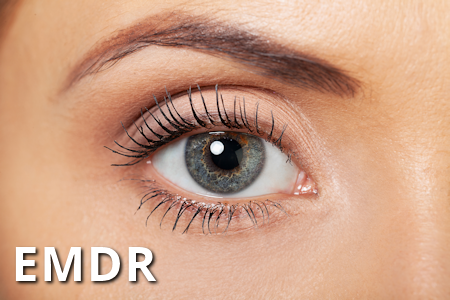EMDR
 Eye Movement Desensitization and Reprocessing (EMDR) is an integrative psychotherapy approach that has been extensively researched and proven effective for the treatment of trauma and many other mental health problems.
Eye Movement Desensitization and Reprocessing (EMDR) is an integrative psychotherapy approach that has been extensively researched and proven effective for the treatment of trauma and many other mental health problems.
The goal of EMDR therapy is to process completely the experiences that are causing problems, and to include new ones that are needed for full health. “Processing” does not mean talking about it.
“Processing” means setting up a learning state that will allow experiences that are causing problems to be “digested” and stored appropriately in your brain. That means that what is useful to you from an experience will be learned, and stored with appropriate emotions in your brain. This will be able to guide you in positive ways in the future. The inappropriate emotions, beliefs, and body sensations will be discarded. Negative emotions, feelings and behaviors are generally caused by unresolved earlier experiences that are pushing you in the wrong directions. The goal of EMDR therapy is to leave you with the emotions, understanding, and perspectives that will lead to healthy and useful behaviors and interactions.
How EMDR Works
No one knows how any form of psychotherapy works neurobiologically or in the brain. However, we do know that when a person is very upset, their brain cannot process information as it does ordinarily. One moment becomes “frozen in time,” and remembering a trauma may feel as bad as going through it the first time because the images, sounds, smells, and feelings haven’t changed. Such memories have a lasting negative effect that interferes with the way a person sees the world and the way they relate to others.
EMDR seems to have a direct effect on the way that the brain processes information. Normal information processing is resumed, so following a successful EMDR session, a person no longer relives the images, sounds, and feelings when the event is brought to mind. You still remember what happened, but it is less upsetting. Many types of therapy have similar goals. However, EMDR appears to be similar to what occurs naturally during dreaming or REM (rapid eye movement) sleep. Therefore, EMDR can be thought of as a physiologically based therapy that helps a person see disturbing material in a new and less distressing way.
We currently have three counsellors that are able to offer EMDR therapy – Ruth-Ann Stewart, Richard Marquez and Teah Scotten. When you are ready to schedule your first session please complete our Intake Form and someone will call you to schedule an appointment.
